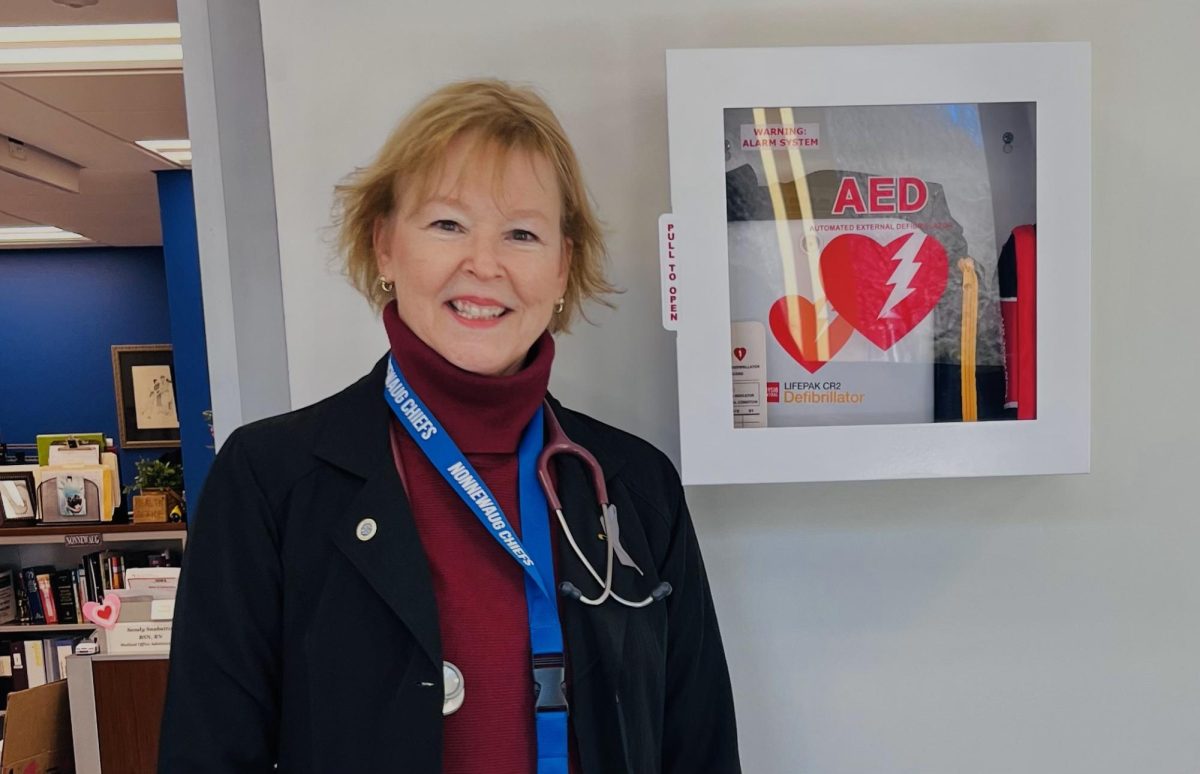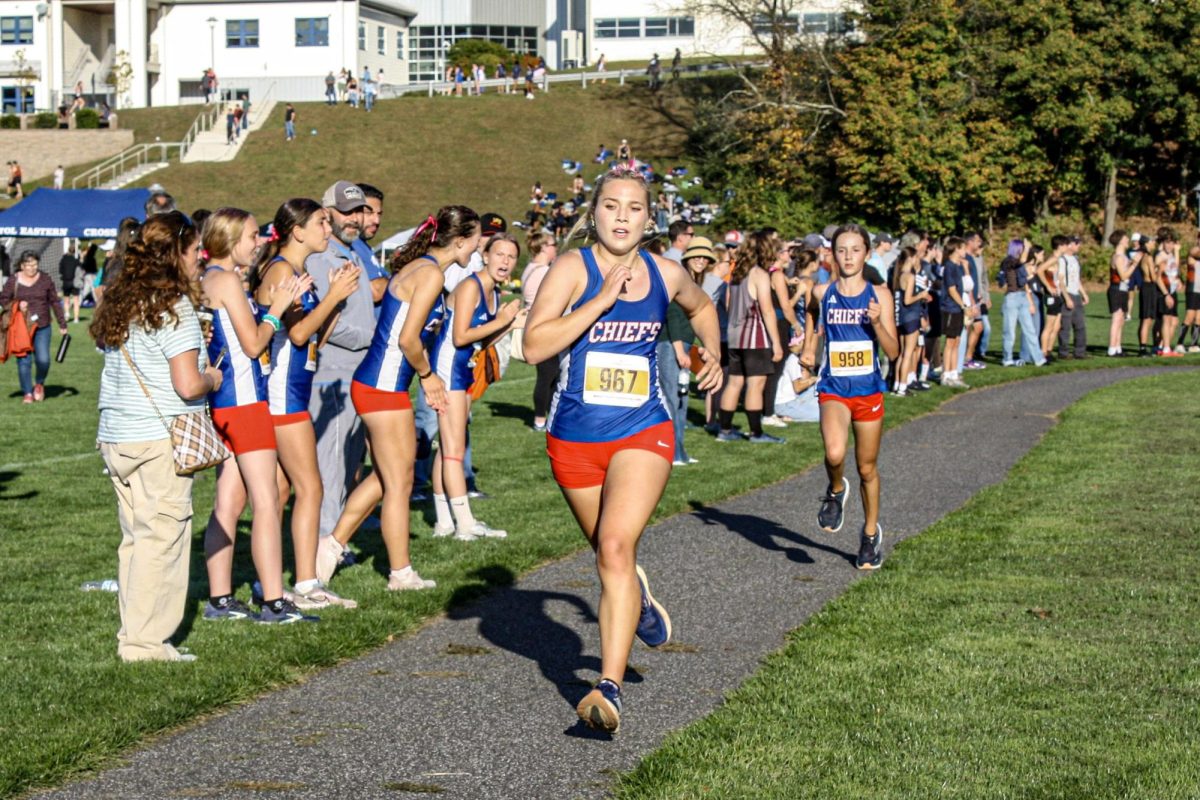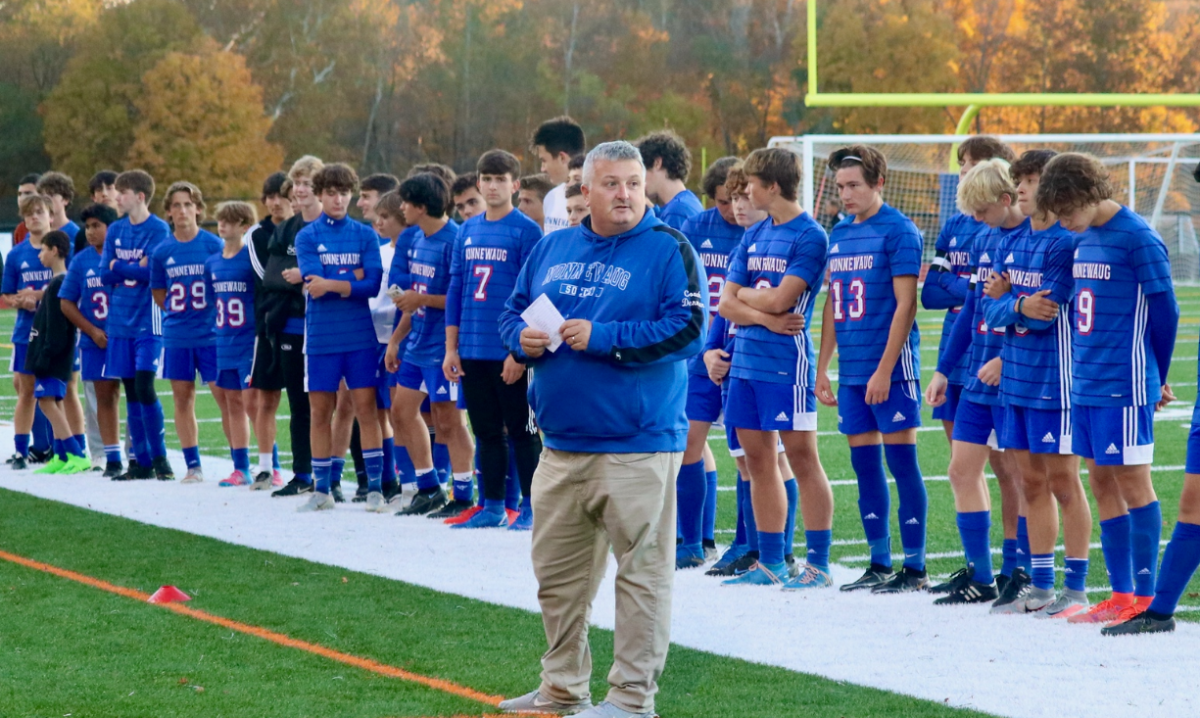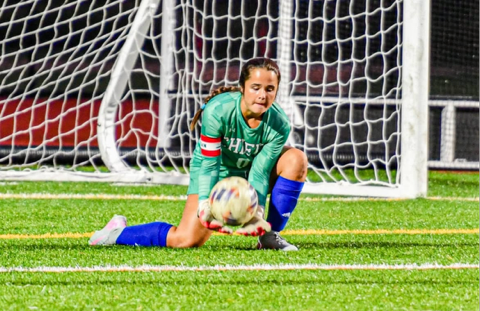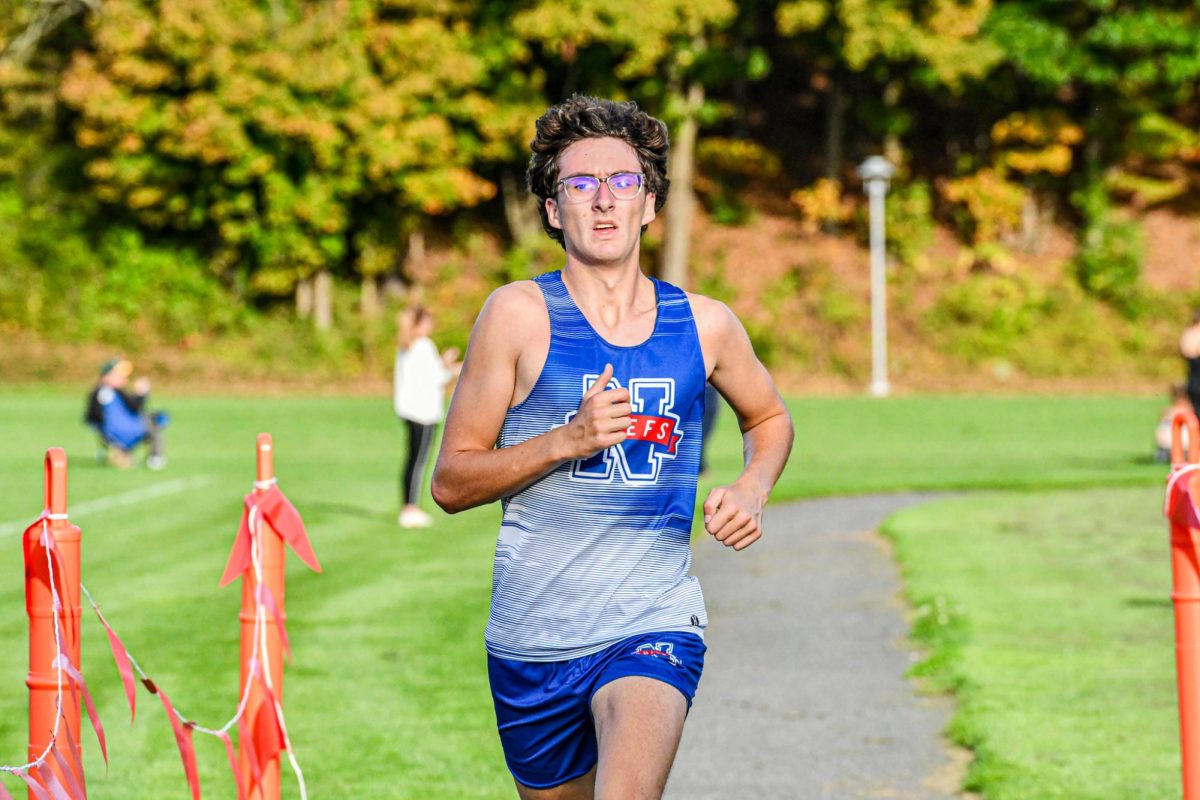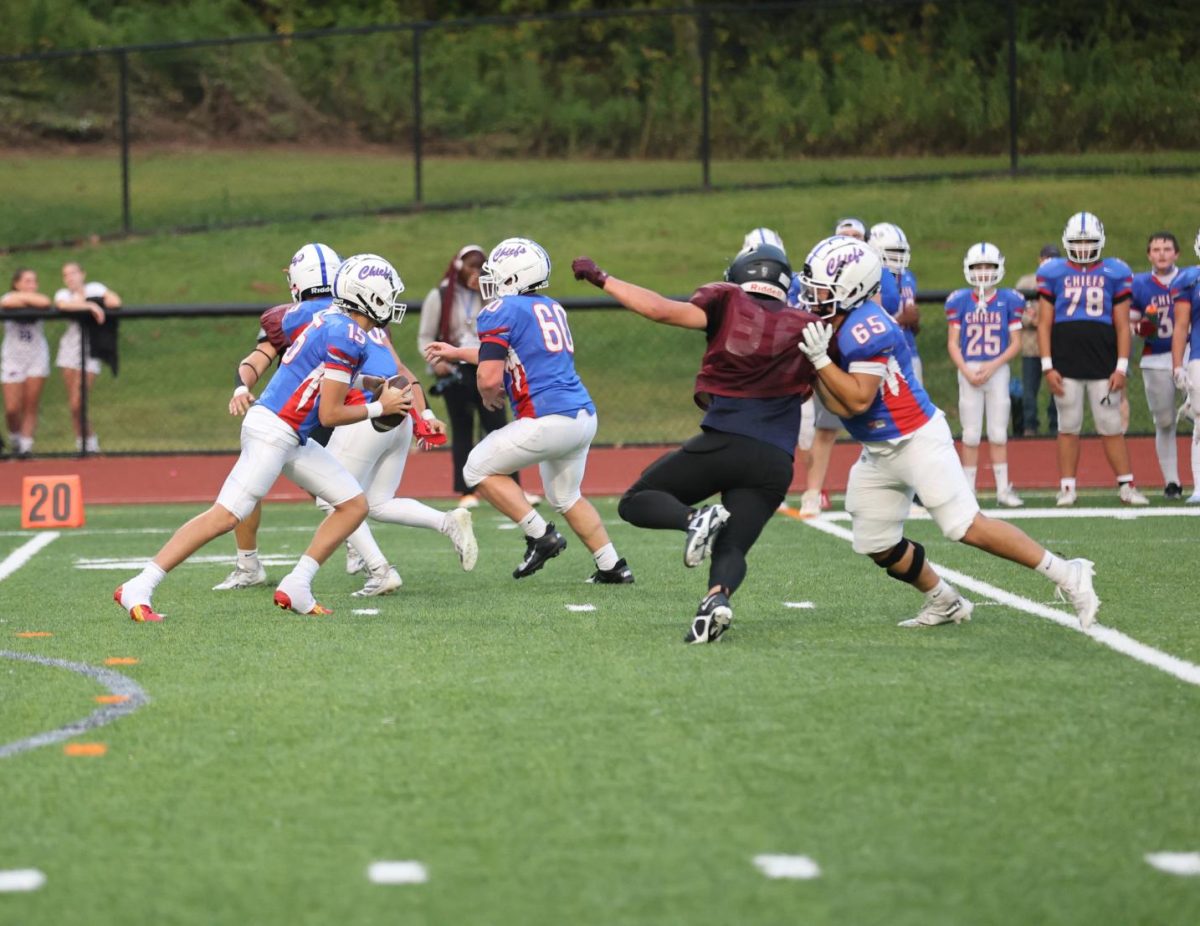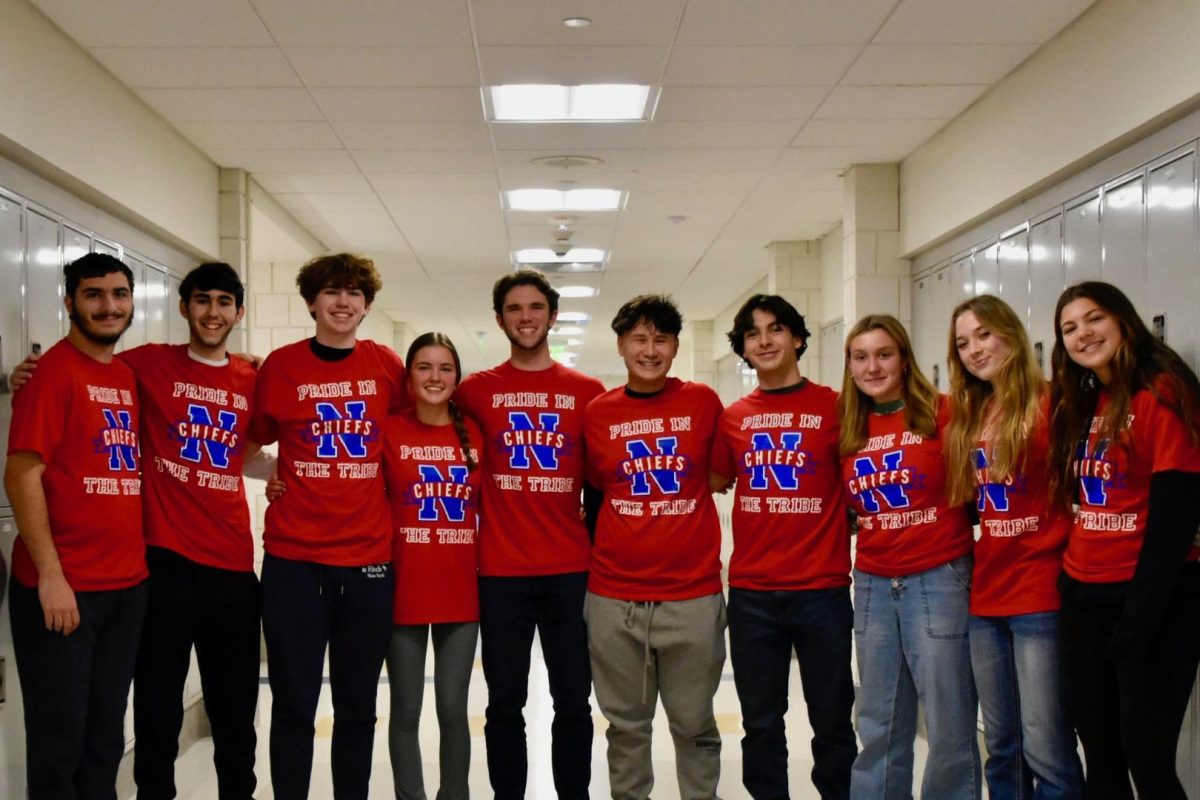WOODBURY — All throughout the country, there are high school athletes striving to create names for themselves, stepping into the spotlight. Athletes everywhere are recognized and praised for the lengths their bodies go to in order to compete at extreme levels in sports.
Yet behind the cheers of all the excitement in athletics there is a silent deadly whisper of sudden cardiac arrest.
In the past few years, there have been numerous trending reports all over the country of young athletes — including Los Angeles Lakers player Bronny James when he played at the University of Southern California — tragically collapsing before, during, or after games. Although this deadly threat is just now grabbing people’s attention due to the overwhelming amount of headlines regarding it, this isn’t a completely new occurrence.
Unfortunately, this silent threat is back in the eye of the public in Connecticut after Holy Cross High School basketball player Tylon Lott unexpectedly went into cardiac arrest shortly after his game Jan. 7 at Kennedy. Luckily, he survived after bystanders revived him, and NBC Connecticut reports that Lott will make a full recovery.
People read the headlines and hear stories of these horrible tragedies happening all over the country, yet sadly sometimes these tragedies hit close to home.
Fall 1991, Nonnewaug High School
It was a normal fall day like every other at Nonnewaug High School — until it wasn’t.
The Nonnewaug community was distraught after the tragedy of losing beloved classmate and soccer player Jesse Weltsek, a 14-year-old freshman varsity soccer player and a member of the class of 1995 who collapsed while playing soccer in gym class due to an undiagnosed heart condition.
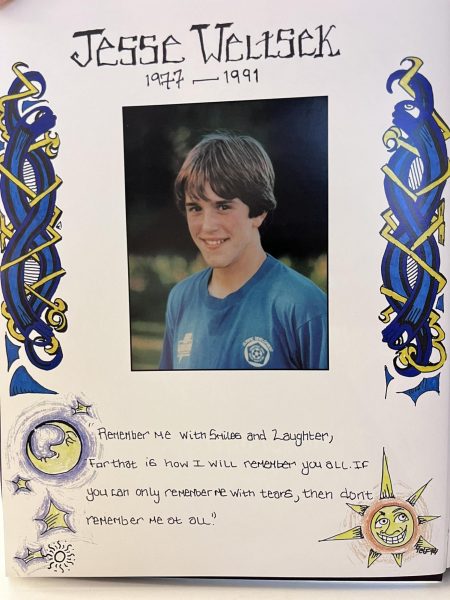
“He was such an incredible athlete, and only a freshman,” said John Lawless, who was a Nonnewaug physical education teacher at the time. “He would’ve been an All-State champion for wrestling and gone so far in soccer. The kid hustled all the time, had a great attitude, he was a leader in everything he did. He had a very bright future that unfortunately he didn’t get to fulfill.”
The incident happened while a substitute teacher was covering Lawless’ gym class.
“All the gym teachers were in a [professional development] that morning, so there was a sub in my class at the time, Jesse’s class,” Lawless said. “They were playing soccer down on the fields. Then, class came to an end and all the students made their way up the hill to come back to the school. He collapsed, and to the sub’s credit, he ran over, saw he wasn’t breathing, started CPR immediately, while sending another student up to get the nurse and call 911.”
“The nurse came down around 7-8 minutes later and they continued CPR for 15-20 minutes,” Lawless continued. “They tried so hard. No one was going to stop until the EMTs came. It was a horrible day.”
Weltsek’s classmates recall the terrible day as if it was yesterday.
“Jesse was what seemed to be a completely healthy young man,” says Jennifer (Oakley) Salisbury, former classmate of Weltsek. “He was loved by everyone.”
Weltsek ended up passing shortly after collapsing from what appeared to be “an abnormal heart rhythm consistent with the enlargement of his heart,” according to the Hartford Courant.
The community was wrecked by this day.
“It was one of the hardest days of my life,” Lawless said. “There was not a dry eye in the school for days.”
Ever since the tragedy, the Nonnewaug boys soccer team has proudly hosted a preseason jamboree honoring Weltsek while raising money for a scholarship in his name.
Now, nearly 35 years later, the pressing questions on everyone’s minds are why are these athletes collapsing, and is our school truly prepared to confront this potential threat of sudden cardiac arrest while hoping to never face such a horrible tragedy again?
According to the Mayo Clinic, “Sudden cardiac arrest (SCA) is the sudden loss of all heart activity due to an irregular heart rhythm. Breathing stops. The person becomes unconscious. Without immediate treatment, sudden cardiac arrest can lead to death.”
The Mayo Clinic adds that cardiac failure is the No. 1 leading cause of death in young athletes. Yet how, and why?
Many athletes who suffer sudden cardiac arrest have undiagnosed heart conditions that can lead to tragedy while playing the sport they love. Although in some situations there is no way to stop this threat, there are ways to help mitigate the risk of it turning deadly.
Is Nonnewaug Prepared?
Nonnewaug school nurse Sandy Snabaitis believes that we’ve done everything we can at Nonnewaug to be prepared for this possible deadly threat, including the presence of automated external defibrillators (AEDs), emergency response plans, and precautionary heart screenings.
“When I started here 10 years ago, there was one AED in the whole building outside the nurse’s office,” said Snabaitis. “Now since I’ve been here, there are six throughout the building: outside the nurse’s office, in the gym, in the front of the ag building, outside of the elevator upstairs, in trainer Sean’s office, and on the sports fields of course, so overall, we are prepared.”
Last spring, the In A Heartbeat Foundation paid a visit to Nonnewaug High School. Throughout the course of two days, nurses performed more than 100 EKG screenings on students, looking for undiagnosed heart conditions.
“EKG screening can detect heart conditions which, if left untreated, can lead to sudden cardiac arrest,¨ said Snabaitis. ¨The 14-point screener and EKG can identify risk factors of sudden cardiac arrest.¨
Snabaitis plans to continue hosting the EKG screenings at least once a year, hoping to see In a Heartbeat Foundation this fall.
“I think it’s a really important thing to be involved in the community, especially since it’s something not a lot of people think about,” said senior Kyleigh Paige, who helped organize the inaugural event in April 2024. “Being involved with the EKG was definitely a cool experience, getting to see how many athletes, high schoolers, even middle and elementary schoolers were being tested. It’s always better to be safe than sorry and this is one of those preventative measures you can take to ensure the health of people in the community.”
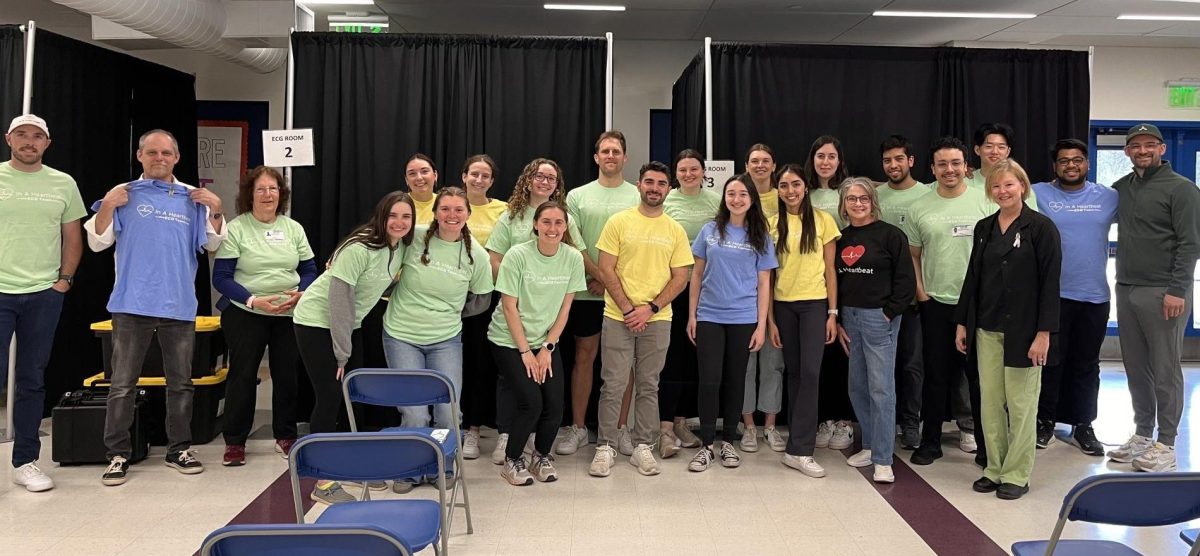
In addition to hosting EKG screenings, Nonnewaug also hosts multiple classes to learn about emergency safety and hands-only CPR.
Science teacher Nick Sheikh, who coaches boys tennis and previously coached girls soccer, teaches the Medical Emergencies course at Nonnewaug.
“We go over CPR, AED training, and lots more,” Sheikh said. “You could go take a similar class at the firehouse over the span of a weekend for four hours both days. But here you can take it for free and over the span of 90 days. We focus a lot more and go into a lot more detail on everything, as well as we focus a lot of hands-on CPR. I think it’s so important to know all these skills because you never know where you’re gonna be and what situation you’re gonna find yourself in.”
In addition, athletic trainer Sean McGee teaches mandatory CPR and first aid training for all coaches at Nonnewaug.
“All our coaches here are CPR-certified,” McGee said. “I did most of their lessons to certify them. I also take the time here and there to help explain what would happen in the event of one of these emergencies so they can have a better understanding.”
While the coaches know CPR, there are certain life-threatening situations that only McGee or EMTs can treat.
“When I think of cardiac arrest, the scariest part to me is sports that involve certain equipment, like football,” McGee said. “I am the only person who is trained for that situation, other than an EMT. Coaches cannot remove a helmet; they are OK to cut off shoulder pads, but it becomes a grey area in which it would be best for me to do. You can only get that training if you’re an EMT or personal trainer.”
Between lifesaving training and equipment, McGee said he feels confident in Nonnewaug’s readiness for a life-threatening emergency. The school also has a step-by-step emergency action plan that outlines responsibilities in case the worst happens. But McGee thinks there’s no such thing as being too prepared for something like cardiac arrest.
“We are definitely over-prepared, but we can definitely improve on scenario-based things,” McGee said. “I’ve been thinking about it for a while. Doing [simulations] with coaches to help, that would definitely be the next step to being very prepared.”
And although not all heart conditions are preventable, McGee says athletes can decrease their risk through their choices.
“The key to prevent it [is] a healthy lifestyle,” says McGee.
Preparation Pays Off
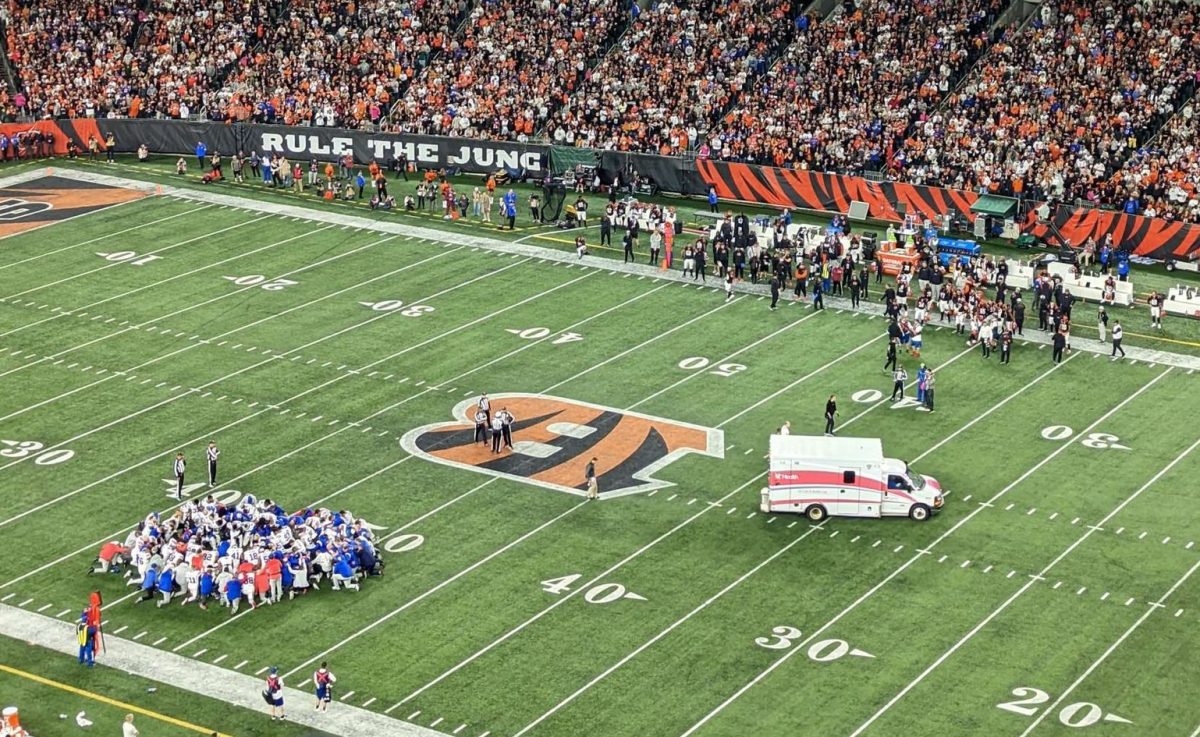
Damar Hamlin’s road to recovery after a nearly life-ending injury is a prominent example of preparedness saving an athlete from dying of cardiac arrest.
Hamlin, a Buffalo Bills safety, collapsed during a Monday Night Football game Jan. 2, 2023, after a hard hit to the chest from an opposing player on the Cincinnati Bengals. He suffered cardiac arrest caused by commotio cordis, according to the American Heart Association. Commotio cordis happens “if [a] physical blow hits during a narrow window in the heart rhythm, [which] can disrupt the heartbeat and cause sudden cardiac arrest.”
Commotio cordis isn’t caused by an underlying heart condition but rather by the sudden impact to the left side of the chest. The American Heart Association says there are fewer than 10 cases a year, mostly in young male athletes, and that “it is frequently caused by baseballs, softballs, lacrosse balls, hockey pucks or physical contact from other athletes.”
The American Heart Association notes that if CPR and an AED are deployed within 3-5 minutes of sudden cardiac arrest caused by commotio cordis, the survival rate is above 50%. McGee, a Bills fan, credits the immediate response by on-field medical personnel, who performed CPR and applied an AED, for resuscitating Hamlin.
“As an athletic trainer and being in the world of sports, it was really emotional for me, just watching it all happen,” said McGee. “It was a miracle.”
The world was shaken by Hamlin’s encounter with this silent threat. Most believed his life was over, but he returned to the field less than two years later. Hamlin fought for his life and lived, while getting all the medical attention he needed to overcome this near-tragedy. This season, he returned to the field at 100%, playing some of the best games of his career.
Most importantly, he proved it is possible to overcome and defeat this silent threat.
This story is in honor of our beloved Jesse Weltsek (class of 1995), who will never be forgotten.




